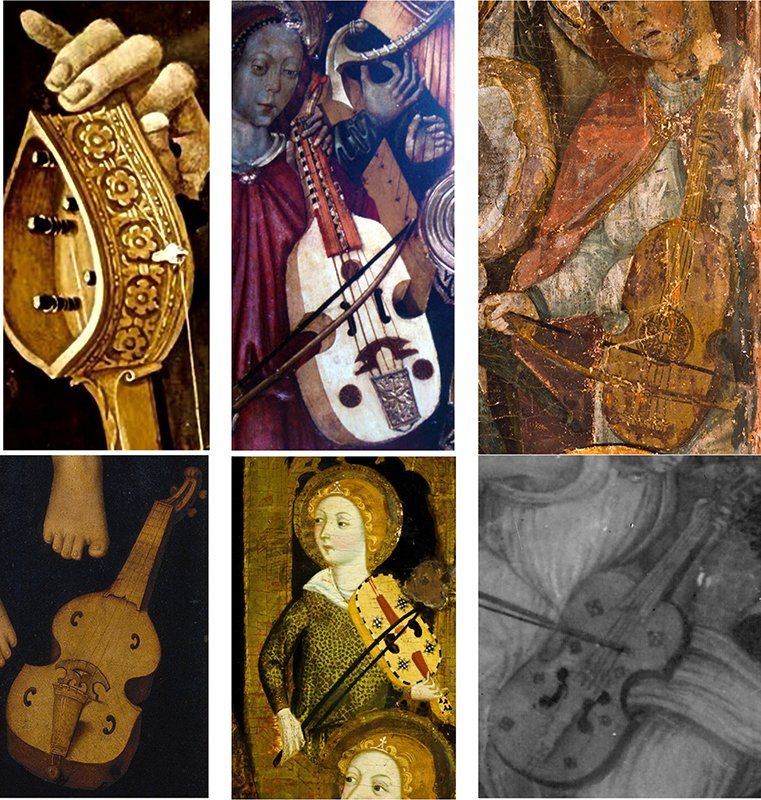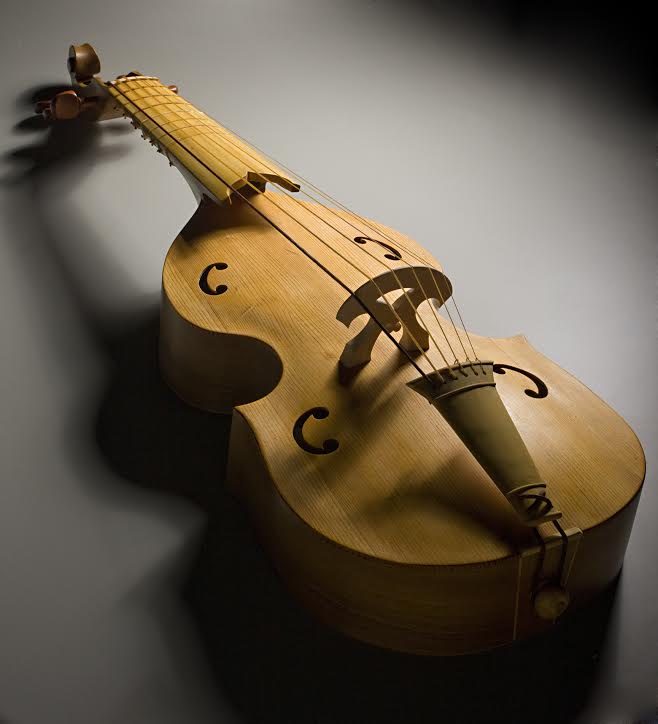Instruments
Bowed Vihuelas
At the beginning bowed vihuelas had fewer strings, they were polyvalent and their origins go back to the Middle Ages. In the Iberian Peninsula we find the oldest and most diverse models; such as those using a flat bridge, double bridge or da braccio position. Its organological characteristics, especially concerning its construction, give it a distinct and very personal identity within the world of bowed instruments. They were conceived in an era where the sound of vocal polyphony and the timbre of the human voice were sought after, well before the independent development of instrumental music.


At the end of the 15th century Johannes Tinctoris attributed Spanish origin ('hispanorum') to the viola de arco in order to distinguish its specific typology from the rest of European violas of the period. Other very relevant personages during the Renaissance place the vihuela de arco in one of the highest artistic categories of its time.
We have a description of the vihuela according to Tinctoris: “The bottom is flat and the borders curved (contrary to the lute)”. The Vihuela and the Viola were played in Spain, Naples, and other regions in Italy as a solo instrument, in a group, or to accompany the voice.


Lyra-viol
The Lyra-viol is described to us by J. Playford in his work, Musick’s recreation from 1661. “Lyra” in Latin means “Harp.” With that meaning in mind and the imitation of the English lute or Pandora, the English gave life to this particular instrument, which had a musical stronghold in British aristocracy. This bowed instrument most likely holds its organological origins in the Italian Lira da braccio and the Lira da gamba and has close ties to the antique Orpheus and his music, according to M. Merssenne. It accompanies the voice magnificently, like the organ. Just as its Italian ancestor, the Lira da braccio, the Lyra-viol was a symbol of humanistic circles in the Renaissance, being the first to parallel the lute in northern Europe.

The lyra-viol enjoys a rich resonance due to the mixed scordatura (different tunings of the open strings) and often had sympathetic strings. The repertoire for this instrument was written in tablature, as was for the lute. The lyra-viol was used to play polyphonic works and for accompanying the voice. During the first decade of the 17th century numerous books were published in England with pieces and songs specifically for this instrument.



